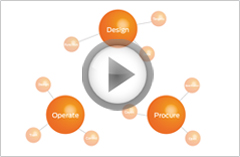Understanding the drivers to better space utilisation
It is now becoming increasingly evident that NHS Trusts need to achieve better utilisation from their facilities. The Kings Foundation recently produced a report that identified that there is circa 2.0m square metres of unused or under-utilised floor space in the NHS, equivalent to the combined floor space of Sainsbury’s and Waitrose. In a separate report, Cost Consultants E C Harris noted that under-utilised floor space in the NHS accounts for a life-cycle cost approaching £500m per annum. This is the equivalent build cost of a major acute hospital, or 2% of the governments QIPP target (see http://www.improvement.nhs.uk/Default.aspx?alias=www.improvement.nhs.uk/qipp).
In numerous discussions with NHS Estate leaders we have been struck by a common issue that repeatedly arises in those conversations which can be rhetorically expressed as: “we usually know where we are inefficient, in terms of space utilisation – but what we do not understand enough of are the drivers that lead that space utilisation“. Our own reflection of these concerns is that to understand these drivers, we need to understand the processes that drive the utilisation of each facility. The process will have considerable influence in terms of who, when and why different users makes use of a particular facility. We need to understand the resource constraints, the process constraints and the key variables that influence utilisation. Our research has also identified a number of issues concerning different working practices that can be directly correlated to patient flow and staff efficiency. These become evident in patient dwell time, particularly for Outpatient visits. Dwell time is the time that a patient spends in the process – a substantial proportion of which can be spent waiting. It is often the working practices used by a specific clinical specialism that are the key drivers behind these issues.
Inevitably, these issues can be complex to resolve. Often the factors are interdependent. This is where OCCUPANCY ANALYTICS ™, a science developed by The Conclude Consultancy brings clarity, because it enables the clear correlation between driver and outcome – between working practice and space utilisation. We presented some of our work at the NHS Sustainability 2012 conference and here were a few comments published on the post-conference debate web site:
“Absolutely inspiring and eye opening presentation”
“Excellent presentation. Great delivery, had data, strong conclusions. Should have been a plenary presentation”
“Absolutely fascinating. If we are to meet our 2050 outcomes, this IS the way forward. Best session of the day!”
“It’s rare to recognised a ‘Damascian Conversion’ moment at a conference. This was a worrying one, and I fear for how little this is known, understood and applied. Excellent! “Reset the course of the oil tanker”?”
If you would wish to understand how The Conclude Consutancy can help you achieve better space utilsation in your hospital facilities, then please do use the contact form on our web site.
Tweet This

Follow us
on Twitter